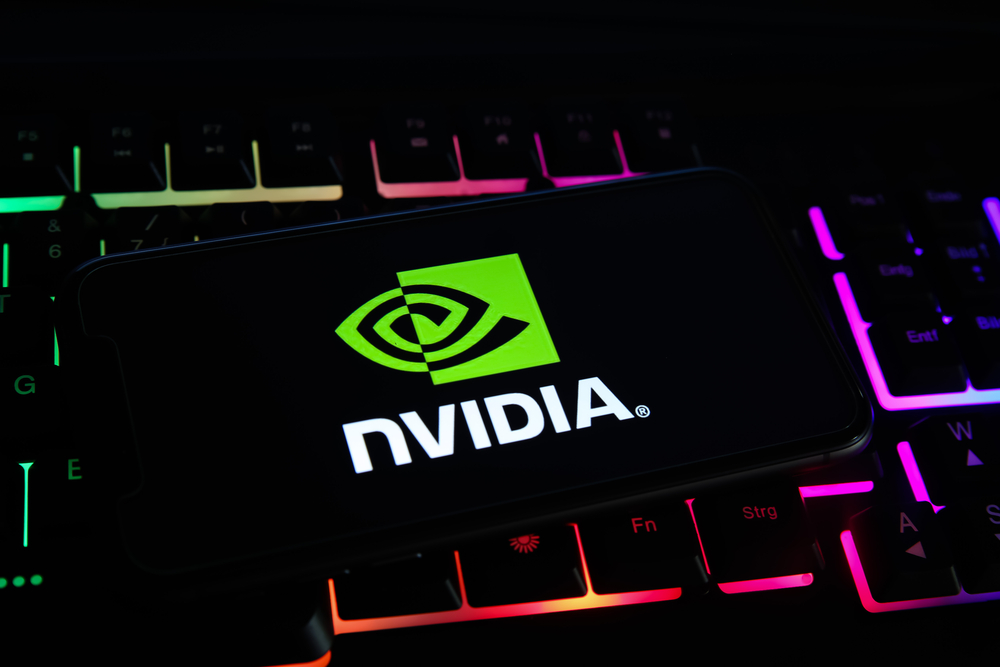

This article is only available to Macro Hive subscribers. Sign-up to receive world-class macro analysis with a daily curated newsletter, podcast, original content from award-winning researchers, cross market strategy, equity insights, trade ideas, crypto flow frameworks, academic paper summaries, explanation and analysis of market-moving events, community investor chat room, and more.
Summary
- A currently popular meme chart shows a startling match between Nvidia’s (NVDA) recent rise and that of Cisco Systems (CSCO) in 1999-2000. Cisco later collapsed over 80% when the dot-com bubble burst.
- NVDA is no CSCO. While CSCO was mostly selling to companies financed with VC cash without a business model, NVDA caters to cashflow-rich mega-tech companies.
- CSCO traded at 150 times forward earnings at its peak. NVDA trades at a rational 30 times multiple.
- Understanding NVDA is challenging because no one knows how AI will unfold, or the infrastructure needed to make it happen near term and long term.
- That uncertainty should keep its valuation reasonable.
Market Implications
- NVDA has upside but is vulnerable to selloffs – these should represent attractive buy opportunities.
Will the Real Nvidia Please Stand Up
A chart doing the rounds on the internet shows NVDA’s stock price following a path remarkably similar to CSCO during the dot-com mania of the late 1990s (Chart 1a). CSCO collapsed after Q1 2000 – implying NVDA is in a similar maniacal bubble.
A different picture emerges when looking at equity performance on a normalized basis (Chart 1b). CSCO and NVDA posted similar returns for years. NVDA then stumbled as CSCO took off and remains far behind CSCO’s rally. Jumping ahead and starting the comparison in 1998 or 1999, NVDA looks like its outrunning CSCO.
The point being, we can manipulate these kinds of charts to tell whatever story we want.
P/E Ratios Tell Another Story – A more telling comparison is their relative valuations. At its peak, CSCO traded at 400 times trailing earnings and 150 times forward earnings. NVDA is trading at 65 times trailing earnings and 32 times projected earnings for the year ending January 2025. By CSCO metrics, NVDA stock would be trading around $4,000 give or take.
Tilting at Mirages
Ultimately, CSCO and NVDA are very different.
In the late 1990s, CSCO had a near monopoly on the network gear the burgeoning upstart telecom industry needed. Remember Coved Communications, or DSL.Net, or Flash.com, among a dozen or so others? Then there were more familiar names like Worldcom, Lucent Technologies, and Global Crossing. Then there were countless little dot-com companies sprouting up like mushrooms wanting network gear too.
It was bottomless demand…until it turned out all those dot-coms were living off VC cash and had no tangible business or revenue model. When the cash dried up, they all went bankrupt and CSCO’s business model went ‘poof!’
Worse, so much network excess capacity had been built-out that it took years for the internet and economy to grow into it. A double whammy for CSCO. When demand started picking up again, other competitors had entered the space.
No question, the internet in the 1990s was a very real thing. But with 20-20 hindsight, CSCO was chasing a mirage.
Today, NVDA has a near monopoly on must-have technology to build out infrastructure for AI applications. Unlike CSCO, NVDA faces real demand from companies with solid revenue models and prospects. These include Amazon (AMZN), Alphabet (GOOG), Microsoft (MSFT), Meta Platforms (META), and most other companies in the S&P 500. They are rushing to establish processing capacity to meet current demand for AI apps – to say nothing of the likely explosion of new AI apps in coming years.
AI too is a very real thing. And for the foreseeable future, NVDA is making it happen.
That is NVDA’s opportunity.
How Might it End? If CSCO’s fate awaits NVDA, it will be because other chip companies create similar or better products soon, or because too much capacity is established too soon. But those risks are a few quarters if not years away.
Another risk is that analysts finally get ahead of the NVDA growth curve and pencil in revenue and earnings gains that it cannot meet – and NVDA’s stock price rises in line with those expectations until they are not met.
That day is not here, yet.
Why No One ‘Gets’ NVDA
One reason analysts and investors have so much difficulty understanding the NVDA phenomenon is that no one has a clear vision of what AI will be in, say, five years.
More importantly, companies hardly ever make the overnight transformation that NVDA has.
Yes, companies change and evolve. MSFT and AMZN are a lot more than super-sized versions of the companies they were in 1999. But they got where they are today through small incremental steps. They retain their original identities – people still think of MSFT as a Windows software company and AMZN as an online retailer and bookseller.
NVDA is another story altogether. Since going public in 1999, NVDA has focused on developing chips for the PC gaming market. It has long led that niche sector – a big fish in a small pond.
Suddenly in May 2023, when releasing Q2 2023 earnings, NVDA sprang to life as the leader in AI hardware. It is likely that many people on the street think NVDA is an AI company, unaware of its still substantial gaming business.
Metrics Go Off the Charts
A few metrics comparing CSCO and NVDA illustrate what is happening.
Sales Accelerate
NVDA sales have more than doubled in a few quarters (Chart 2a)[1]. Even as it neared its peak, CSCO did not match this.
On a quarter-over-quarter growth, NVDA’s accelerating sales is even more apparent (Chart 2b). We note two points:
- NVDA revenue is shifting to a new normal. In coming quarters, the level will keep rising but the per-quarter (and year-over-year) growth will slow, probably to a more sedate 10-20% quarterly rate. That could lead to volatility in the stock price if analyst and investor expectations get overly aggressive.
- NVDA sales have been far more volatile than CSCO, reflecting the boom/bust cycle of the semiconductor industry. CSCO’s steady, predictable growth probably boosted investor confidence in its prospects during the 1990s. NVDA is yet to evolve into steady-state growth. Our guess is no, although it may be immune for now. Any lingering concerns about returning to that cycle may help keep NVDA valuations in check.
Earnings Go Vertical
Impressive as sales growth has been, quarterly earnings gains have been massive, jumping five-fold over the past three quarters (Chart 3). This is primarily due to an expansion in net margins from around 30% in the decade before the pandemic to 50%+ on AI-related chip demand (Chart 4).
Just as revenue grow will slow as quarterly and annual comparisons become tougher, earnings will too. The big question is whether NVDA sustains those margins or if its pricing power softens as the initial shortage of AI chips is met and more competition emerges. That is another uncertainty that should keep NVDA valuations at reasonable levels.
NVDA’s margins were mostly in the 10% range for some 15 years after its IPO in 1999. After the global financial crisis, margins expanded to roughly 30% and earnings growth accelerated. We have no insight into where net margins will settle, but for now it is reasonable to assume they return to the pre-pandemic level.
Meanwhile, CSCO has always generated net margins near 20%. Net margins were only about 25% during its late 1990s heyday.
Conclusion
It is tempting to look at NVDA’s equity profile and conclude it is entering bubble territory a la CSCO.
But NVDA is a very different story. Based on the fundamentals, NVDA appears to be trading near fair value, or even cheap to fair value. Analysts have yet to catch up to NVDA’s sales and earnings growth of recent quarters. The best they have done is suspend belief and go with NVDA’s conservative guidance (Table 1).
We guess markets will be careful about getting too far ahead of that guidance. If that continues, NVDA’s stock has upside.
We also acknowledge that NVDA stock is vulnerable to selloffs.
It sold off 9% in the days before the recent earnings release on nervousness that NVDA might not meet its lofty forecast or cut its projections for coming quarters.
Everyone knows AI is ‘The Next Big Thing’ – but no one knows how it will develop over coming quarters or years. If progress turns out to be slow or uneven, demand for NVDA chips could slow. Or a competitor could announce a chip that matches or exceeds NVDA’s product line. Even if more hype than fact, NVDA will be vulnerable.
And markets hardly know how much AI infrastructure will be needed or how quickly. Red-hot demand today could quickly cool if the major cloud providers decide they can back off an accelerated buildout pace.
Or there could be another macro shock. Even if AI development keeps bubbling, a high-beta stock like NVDA will be vulnerable.
Still, none of these possibilities mean NVDA is fated to go the way of CSCO. Rather, they will be attractive buy opportunities.
—
- Unless otherwise noted, these charts show CSCO’s history beginning with its IPO in the early 1990s, and NVDA’s beginning with its IPO in 1999. ↑
.
Over a 30-year career as a sell side analyst, John covered the structured finance and credit markets before serving as a corporate market strategist. In recent years, he has moved into a global strategist role.
.
